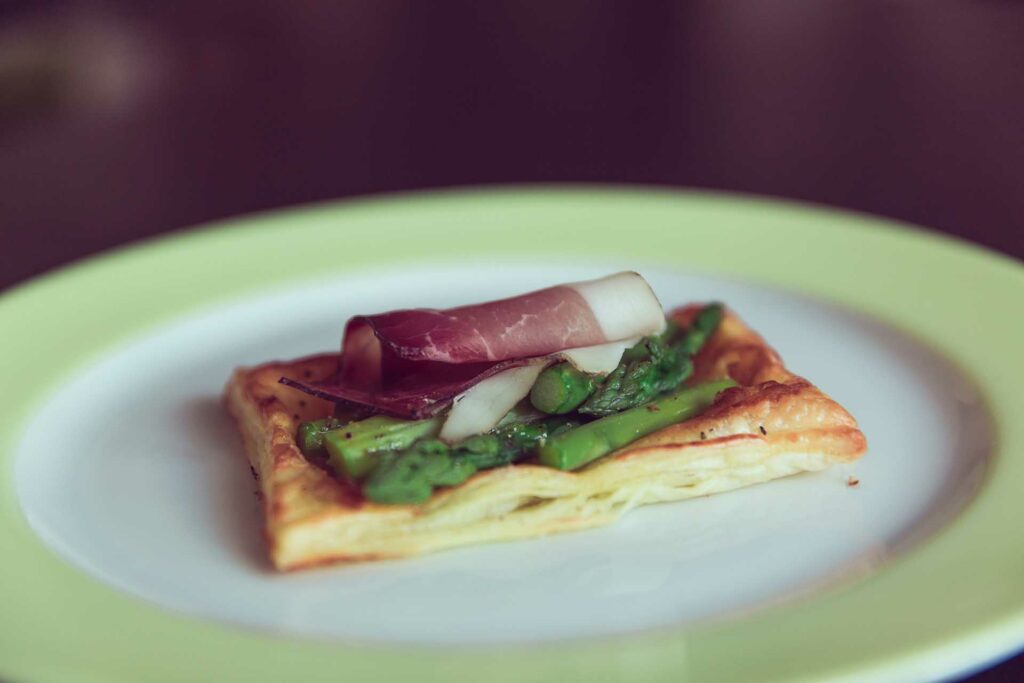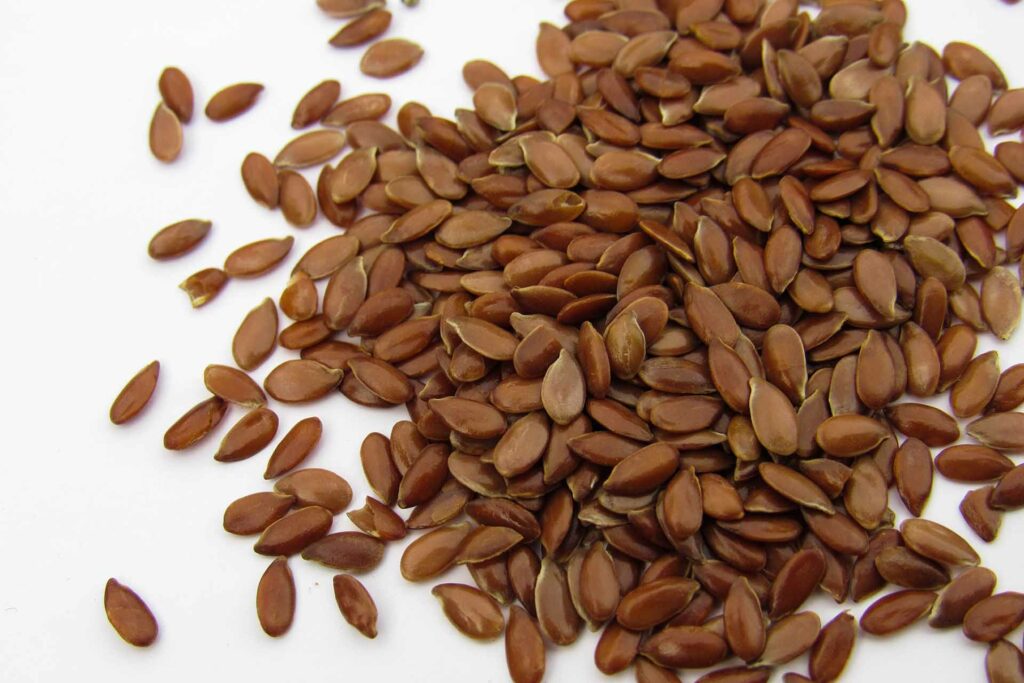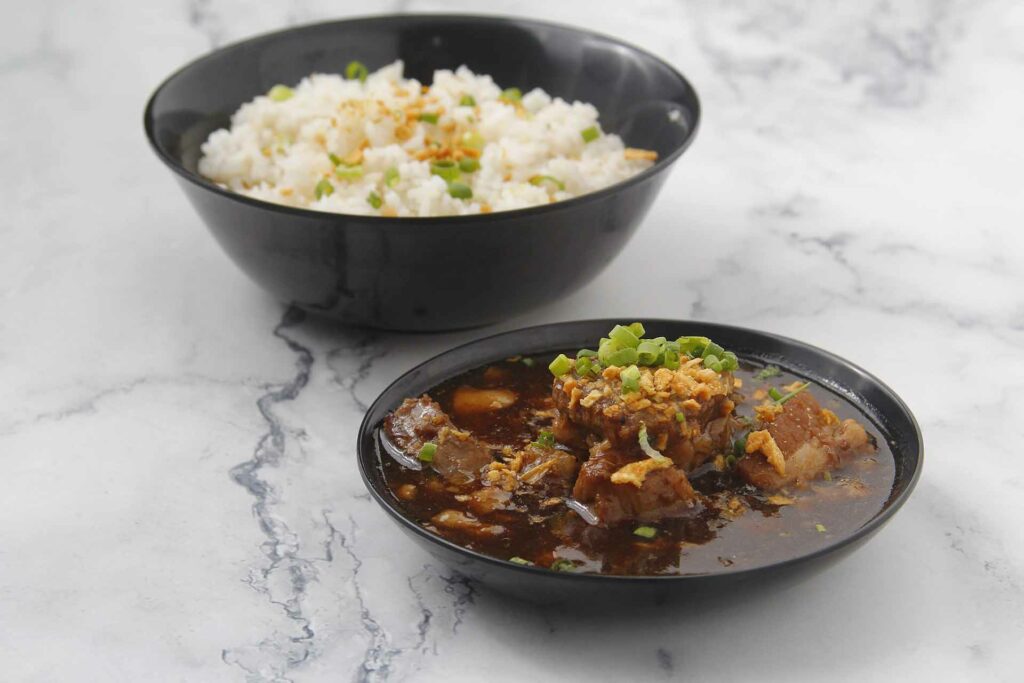Corn flour, also known as cornmeal or maize flour, is a finely ground powder made from dried maize kernels. It is a staple ingredient in many cuisines around the world, known for its versatility and ability to add texture and flavor to various dishes. Whether you’re making tortillas, cornbread, or thickening a sauce, corn flour plays a crucial role in achieving the desired consistency and taste.
However, there are situations where you may need to find a suitable substitute for corn flour. This could be due to dietary restrictions such as gluten intolerance or allergies to corn. It could also be a matter of availability, as corn flour may not be readily accessible in certain regions. In such cases, having knowledge about alternative options becomes invaluable.
Finding the right corn flour substitute requires an understanding of the properties and characteristics of different ingredients. Fortunately, there are several alternatives available that can mimic the effects of corn flour in various recipes. In this comprehensive guide, we will explore a wide range of substitutes to help you navigate through the world of corn flour replacements.
Why People Look for Corn Flour Substitutes
There are several reasons why individuals may seek corn flour substitutes. Let’s take a closer look at some of the common motivations:
- Dietary Restrictions: Many people follow specific dietary plans or have dietary restrictions that exclude corn or gluten-containing ingredients. For those who are gluten intolerant or have celiac disease, finding suitable alternatives to corn flour becomes essential.
- Allergies: Some individuals may have allergies or sensitivities to corn or corn-related products. In such cases, finding a substitute allows them to enjoy their favorite recipes without the risk of adverse reactions.
- Regional Availability: Corn flour may not be readily available in certain regions or countries. This could be due to factors like climate, cultural preferences, or limited access to specific ingredients. In such situations, discovering alternative options becomes crucial for culinary exploration.
- Experimentation: Exploring different flavors and textures is an exciting aspect of cooking. Substituting corn flour with other ingredients opens up opportunities to create unique dishes and add new dimensions to traditional recipes. It allows for experimentation and encourages culinary creativity.
Importance of Finding Suitable Alternatives
Finding suitable alternatives to corn flour is crucial for maintaining the integrity of recipes and achieving desired results. Using the wrong substitute can lead to textural and flavor inconsistencies, resulting in disappointing outcomes. By understanding different corn flour substitutes and their properties, you can make informed decisions and ensure successful culinary endeavors.
In the following sections, we will delve into the world of corn flour substitutes, exploring various options and their applications. We will guide you through the process of substituting corn flour with alternative types of flour such as wheat flour, rice flour, potato starch, tapioca starch, arrowroot powder, almond flour, coconut flour, oat flour, quinoa flour, and chickpea flour. Additionally, we will provide tips, tricks, and recipe suggestions to help you achieve exceptional results when using these substitutes.
Understanding Different Types of Corn Flour Substitutes
When it comes to substituting corn flour, there is a wide range of alternatives available that can yield similar results in terms of texture, flavor, and functionality. In this section, we will explore some of the most commonly used substitutes and discuss their characteristics, usage, and considerations.
Wheat Flour
Wheat flour is a versatile and readily available substitute for corn flour. It is a staple ingredient in baking and cooking, known for its ability to provide structure and texture to various recipes. However, it is important to note that wheat flour differs from corn flour in terms of flavor and texture. While corn flour has a subtle sweetness and a fine, smooth texture, wheat flour has a slightly nutty flavor and a denser consistency.
To use wheat flour as a substitute for corn flour, it is essential to understand the correct ratios and adjustments. In general, you can substitute wheat flour for corn flour in a 1:1 ratio. However, due to differences in absorbency, you may need to adjust the amount of liquid in the recipe. Wheat flour absorbs more moisture than corn flour, so you may need to increase the liquid content slightly.
When substituting wheat flour for corn flour, it is important to consider the impact on the final texture of the dish. Corn flour tends to provide a lighter and crumbly texture, while wheat flour can result in a denser and chewier consistency. Therefore, it is recommended to use wheat flour as a substitute in recipes that can handle a slightly heavier texture, such as bread, muffins, or cookies.
Rice Flour
Rice flour is an excellent alternative for those who follow a gluten-free diet or have a corn allergy. Made from finely ground rice, this flour has a slightly grainy texture and a neutral taste. Rice flour can be used as a substitute for corn flour in a variety of recipes, including baked goods, coatings, and thickening agents.
When substituting corn flour with rice flour, it is important to consider the differences in absorbency. Rice flour absorbs more liquid than corn flour, so you may need to adjust the amount of liquid in your recipe. Additionally, rice flour has a lower protein content compared to corn flour, which can affect the structure and texture of the final product.
One advantage of using rice flour as a substitute is its light and delicate texture, which can be particularly beneficial in recipes that require a tender crumb or a crispy coating. However, it is important to note that rice flour can sometimes result in a slightly gritty texture. To overcome this, you can blend the rice flour with other gluten-free flours or use a finely ground rice flour variety.
Potato Starch
Potato starch is a gluten-free substitute that is commonly used as a thickening agent in cooking and baking. It is derived from potatoes and has a powdery, white appearance. Potato starch is known for its excellent ability to thicken liquids and provide a smooth, velvety texture.
To substitute corn flour with potato starch, you can use it in a 1:1 ratio. However, it is important to note that potato starch has a higher gelatinization temperature compared to corn flour. This means that it requires higher heat to reach its full thickening potential. When using potato starch as a substitute, ensure that the liquid reaches a boil and is cooked for a sufficient amount of time to activate its thickening properties.
One advantage of using potato starch as a substitute is its neutral taste, which allows the flavors of other ingredients to shine through. However, it is important to note that potato starch can result in a slightly heavier texture compared to corn flour. Therefore, it is recommended to use potato starch in recipes that can accommodate a denser consistency, such as soups, stews, and sauces.
Tapioca Starch
Tapioca starch, also known as tapioca flour, is a gluten-free substitute that is derived from the cassava root. It is a versatile ingredient commonly used as a thickening agent, especially in Asian cuisine. Tapioca starch has a powdery texture and a neutral taste, making it suitable for a wide range of recipes.
To substitute corn flour with tapioca starch, you can use it in a 1:1 ratio. However, it is important to note that tapioca starch has a higher thickening power compared to corn flour. Therefore, you may need to use slightly less tapioca starch than the amount of corn flour called for in the recipe.
One of the benefits of using tapioca starch as a substitute is its ability to provide a smooth and glossy texture. It is particularly useful in recipes that require a clear, translucent appearance, such as fruit fillings or custards. Tapioca starch is also known for its ability to withstand high temperatures without losing its thickening properties, making it suitable for both stovetop and oven applications.
Arrowroot Powder
Arrowroot powder is a gluten-free substitute derived from the roots of the arrowroot plant. It is a fine white powder that is commonly used as a thickening agent in cooking and baking. Arrowroot powder has a neutral taste and a silky texture, making it an excellent replacement for corn flour in various recipes.
When substituting corn flour with arrowroot powder, you can generally use it in a 1:1 ratio. However, it is important to note that arrowroot powder has a higher thickening power compared to corn flour. Therefore, you may need to use slightly less arrowroot powder to achieve the desired consistency.
One advantage of using arrowroot powder as a substitute is its ability to provide a glossy and smooth texture to sauces, gravies, and puddings. It is particularly suitable for recipes that require a delicate and silky mouthfeel. Additionally, arrowroot powder is resistant to breaking down when exposed to acidic ingredients or prolonged cooking, making it a reliable thickening agent in various culinary applications.
Exploring Other Corn Flour Alternatives
While wheat flour, rice flour, potato starch, tapioca starch, and arrowroot powder are commonly used substitutes for corn flour, there are several other alternatives worth exploring. In this section, we will introduce you to almond flour, coconut flour, oat flour, quinoa flour, and chickpea flour as additional options for substituting corn flour in your recipes.
Almond Flour
Almond flour is a gluten-free and grain-free substitute that is made from finely ground blanched almonds. It offers a unique nutty flavor and a slightly sweet taste, making it a popular choice among those seeking a flavorful alternative to corn flour. Almond flour is rich in healthy fats, protein, and fiber, adding nutritional value to your recipes.
When substituting corn flour with almond flour, it is important to note that almond flour has a different texture and moisture content. Almond flour tends to be denser and moister than corn flour, which can affect the overall structure and texture of the final product. It is recommended to use almond flour in recipes that can accommodate a slightly heavier texture, such as cakes, cookies, and quick breads.
To substitute corn flour with almond flour, you can generally use a 1:1 ratio. However, due to the differences in absorbency, you may need to adjust the amount of liquid in your recipe. Almond flour absorbs more moisture than corn flour, so it is advisable to increase the liquid content slightly to achieve the desired consistency.
One advantage of using almond flour as a substitute is its ability to add a rich and nutty flavor to your dishes. It can enhance the taste profile of baked goods, giving them a delightful almond essence. Additionally, almond flour can provide a tender and moist texture, resulting in delectable treats that are both gluten-free and delicious.
Coconut Flour
Coconut flour is another gluten-free and grain-free alternative that is gaining popularity in the culinary world. It is made from dried and ground coconut meat, offering a distinct tropical flavor and aroma. Coconut flour is highly absorbent and has a fine, powdery texture, which sets it apart from other substitutes.
When substituting corn flour with coconut flour, it is crucial to understand the unique properties and characteristics of coconut flour. Coconut flour absorbs a significant amount of moisture, so you will typically need to use less coconut flour compared to the amount of corn flour called for in a recipe. A general guideline is to use around 1/4 to 1/3 cup of coconut flour for every cup of corn flour.
Due to its high absorbency, using coconut flour as a substitute requires adjustments to the liquid content of the recipe. You will need to increase the amount of liquid, such as eggs or milk, to maintain the proper moisture level in your dish. Additionally, coconut flour can result in a denser and drier texture, so it is advisable to add extra moisture-rich ingredients like mashed fruits or yogurt to counterbalance this effect.
One of the advantages of using coconut flour as a substitute is its unique flavor profile. It adds a subtle sweetness and a delightful coconut taste to your recipes. Coconut flour is particularly well-suited for baked goods, such as cakes, muffins, and pancakes, where it can contribute to a light and fluffy texture.
Oat Flour
Oat flour is a nutritious and versatile substitute for corn flour that is made from finely ground oats. It offers a slightly sweet and nutty flavor, making it a popular choice for both sweet and savory recipes. Oat flour is gluten-free, provided that it is certified gluten-free, making it suitable for individuals with gluten sensitivities.
When substituting corn flour with oat flour, it is important to consider the differences in texture and absorbency. Oat flour has a finer and softer texture compared to corn flour, which can affect the overall structure and crumb of your dishes. It is recommended to use oat flour in recipes that can accommodate a more tender and delicate texture, such as cookies, muffins, and pancakes.
To substitute corn flour with oat flour, you can generally use a 1:1 ratio. However, due to the differences in absorbency, you may need to adjust the liquid content in your recipe. Oat flour absorbs more moisture than corn flour, so it is advisable to increase the liquid slightly to achieve the desired consistency.
One advantage of using oat flour as a substitute is its nutritional value. Oats are rich in fiber, vitamins, and minerals, making oat flour a wholesome addition to your recipes. Oat flour can contribute to a moist and tender texture, adding a delightful nutty flavor to your culinary creations.
Quinoa Flour
Quinoa flour is a gluten-free and protein-rich substitute that is made from finely ground quinoa seeds. It offers a slightly earthy and nutty flavor, making it a unique addition to various recipes. Quinoa flour is packed with essential amino acids, making it a nutritious alternative to corn flour.
When substituting corn flour with quinoa flour, it is important to understand its distinctive characteristics. Quinoa flour has a slightly grainy texture and a distinct flavor profile that can enhance the overall taste of your dishes. It is well-suited for both sweet and savory recipes, including breads, cookies, and pancakes.
To substitute corn flour with quinoa flour, you can generally use a 1:1 ratio. However, it is important to note that quinoa flour can result in a slightly denser texture compared to corn flour. Adjustments may be needed to achieve the desired consistency. Additionally, quinoa flour has a stronger flavor, so it is advisable to pair it with complementary ingredients to balance the taste.
One advantage of using quinoa flour as a substitute is its nutritional profile. Quinoa is a complete protein, containing all nine essential amino acids, making quinoa flour an excellent choice for individuals seeking a high-protein alternative. Quinoa flour can lend a pleasant nuttiness and a hearty texture to your recipes.
Chickpea Flour
Chickpea flour, also known as gram flour or besan, is a versatile and protein-rich substitute for corn flour. It is made from ground chickpeas and offers a slightly nutty and earthy flavor. Chickpea flour is commonly used in various cuisines around the world, particularly in Indian, Middle Eastern, and Mediterranean dishes.
When substituting corn flour with chickpea flour, it is important to understand its unique properties. Chickpea flour has a dense texture and a distinctive flavor that can significantly impact the final taste of your dishes. It is well-suited for both sweet and savory recipes, including breads, pancakes, fritters, and flatbreads.
To substitute corn flour with chickpea flour, you can generally use a 1:1 ratio. However, it is important to note that chickpea flour has a stronger flavor compared to corn flour. Adjustments may be needed to balance the taste profile. Additionally, chickpea flour has a higher protein content, which can contribute to a denser texture in baked goods.
One advantage of using chickpea flour as a substitute is its nutritional value. Chickpeas are rich in fiber, vitamins, and minerals, making chickpea flour a wholesome choice for individuals seeking a nutrient-dense alternative. Chickpea flour can add a unique flavor and a satisfying texture to your recipes, allowing you to explore the diverse world of international cuisine.
Tips and Tricks for Successful Corn Flour Substitutions
Successfully substituting corn flour with alternative ingredients requires careful consideration of ratios, texture, and flavors. In this section, we will provide you with valuable tips and tricks to ensure your corn flour substitutions yield excellent results. From understanding conversions and adjusting recipes to achieving desired texture and balancing flavors, these insights will help you navigate the world of corn flour substitutes with confidence.
Understanding Ratios and Conversions
When substituting corn flour with alternative ingredients, it is essential to understand the proper ratios and conversions to achieve the desired consistency and taste in your recipes. While some substitutes can be used in a 1:1 ratio, others may require adjustments due to differences in texture, absorbency, and flavor.
To ensure accurate conversions, it is recommended to measure ingredients by weight rather than volume. This allows for precise measurements and consistent results. If a recipe calls for a specific weight of corn flour, you can use a kitchen scale to measure an equivalent weight of the substitute. Online conversion tools and ingredient-specific conversion charts can also be helpful references.
Additionally, it is important to keep in mind that different substitutes may have varying levels of absorbency. Some substitutes, like rice flour or oat flour, may require slightly more liquid in the recipe to compensate for their absorbent nature. Paying attention to the consistency of the batter or dough during the cooking process and making necessary adjustments can help achieve the desired texture.
Texture and Consistency Considerations
One of the key aspects of successful corn flour substitutions is achieving the desired texture and consistency in your dishes. Corn flour imparts a unique texture to recipes, and finding substitutes that can mimic or enhance this texture is crucial.
When choosing a substitute, consider the texture you want to achieve. If you’re looking for a light and crumbly texture, options like rice flour or almond flour can be suitable choices. On the other hand, if you prefer a denser and chewier texture, alternatives like coconut flour or quinoa flour may be more appropriate.
In addition to selecting the right substitute, adjustments to other recipe components may be necessary. For example, if you’re substituting corn flour in a baking recipe, you may need to adjust the leavening agents (such as baking soda or baking powder) to ensure proper rising. In savory dishes, modifications to cooking times and temperatures may be required to achieve the desired texture.
Flavor Profiles and Taste
Another important consideration when substituting corn flour is the impact on the flavor profile of your recipes. Corn flour has a unique subtle sweetness and flavor that can enhance certain dishes. While substitutes may not replicate the exact taste of corn flour, they can still contribute their own distinct flavors.
Some substitutes, like almond flour or coconut flour, can add a pleasant nuttiness to your recipes. Others, such as quinoa flour or chickpea flour, can impart earthy or savory notes. Understanding the flavor profile of the substitute you choose and how it complements the other ingredients in the recipe is key to achieving a harmonious taste.
To balance flavors when using substitutes, consider incorporating additional seasonings, herbs, or spices to enhance or mask any differences in taste. Experimenting with different combinations can lead to exciting flavor discoveries and personalized adaptations of your favorite recipes.
Allergies and Dietary Restrictions
For individuals with specific dietary restrictions or allergies, finding suitable corn flour substitutes becomes even more crucial. Fortunately, many of the alternatives discussed in this guide offer gluten-free options that can be safely enjoyed by those with gluten intolerance or celiac disease.
When selecting a substitute, it is important to consider potential allergens and cross-contamination risks. For example, almond flour is made from nuts and should be avoided by individuals with nut allergies. Similarly, coconut flour is derived from coconuts, which can be an allergen for some individuals.
If you have dietary restrictions or allergies, always read product labels carefully to ensure the substitute you choose is safe for consumption. Additionally, consider consulting with a healthcare professional or a registered dietitian for personalized guidance on suitable substitutions based on your specific needs.
Experimentation and Adaptation
One of the joys of cooking and baking is the opportunity to experiment and adapt recipes according to your preferences. When substituting corn flour, don’t be afraid to get creative and try different combinations of substitutes to achieve the desired results.
Every substitute has its own unique qualities and characteristics, and by exploring different options, you can discover new flavors, textures, and culinary possibilities. Keep a record of your experiments, noting the ratios, adjustments, and outcomes, to build your own repertoire of successful substitutions.
Remember, successful cooking is often a result of trial and error. Embrace the process of experimentation, be open to surprises, and enjoy the journey of discovering delicious alternatives to corn flour in your favorite recipes.
Recipes and Suggestions for Using Corn Flour Substitutes
Now that we have explored a wide range of corn flour substitutes, it’s time to put them to use in some delicious recipes. In this section, we will provide you with a variety of recipe ideas and suggestions to inspire your culinary creations. Whether you’re looking to bake bread and muffins or cook savory soups and sauces, there is a substitute that can elevate your dishes to new heights.
Baking Recipes
- Bread and Muffins: Substitute wheat flour, rice flour, or almond flour for corn flour in your favorite bread and muffin recipes. Try creating a gluten-free almond flour banana bread, a fragrant rice flour cinnamon swirl loaf, or a hearty wheat flour zucchini muffin.
- Cakes and Pastries: Experiment with coconut flour or almond flour in your cake and pastry recipes. Indulge in a moist coconut flour chocolate cake or a delicate almond flour tart crust. These substitutes can add a unique flavor and texture to your sweet treats.
- Cookies and Biscuits: Replace corn flour with oat flour or rice flour in your cookie and biscuit recipes. Whip up a batch of chewy oat flour chocolate chip cookies or delicate rice flour shortbread biscuits. These substitutes can contribute to a satisfying texture and flavor.
Cooking Recipes
- Soups and Stews: Use potato starch or tapioca starch to thicken your soups and stews. Create a velvety potato starch-based creamy potato soup or a rich tapioca starch-thickened beef stew. These substitutes will help achieve the desired consistency in your savory creations.
- Sauces and Gravies: Substitute arrowroot powder or tapioca starch for corn flour in your sauces and gravies. Whip up a silky-smooth arrowroot powder-based mushroom sauce or a luscious tapioca starch-thickened chicken gravy. These substitutes will provide the perfect thickening power for your savory accompaniments.
- Fried and Breaded Dishes: Use chickpea flour or rice flour as a coating for your fried and breaded dishes. Enjoy crispy chickpea flour-coated vegetable fritters or crunchy rice flour-breaded chicken tenders. These substitutes will add a delightful crunch to your favorite fried treats.
Ethnic and International Cuisine
- Mexican and Latin American Dishes: Explore the flavors of Mexican and Latin American cuisine by using alternative flours in traditional dishes. Make corn-free tortillas with rice flour, indulge in gluten-free almond flour empanadas, or create a savory chickpea flour-based arepa.
- Asian-Inspired Recipes: Dive into the vibrant world of Asian cuisine by incorporating alternative flours into your favorite dishes. Prepare gluten-free coconut flour-based Thai curry, savor a crispy rice flour-coated tempura, or delight in a chickpea flour-based Indian pakora.
- European and Mediterranean Fare: Add a twist to classic European and Mediterranean recipes with alternative flours. Bake a fluffy almond flour-based French macaron, whip up a chickpea flour-based Spanish tortilla, or create a quinoa flour-infused Mediterranean flatbread for a unique culinary experience.
These are just a few ideas to get you started, but the possibilities are endless. Feel free to adapt and modify existing recipes or create your own culinary masterpieces using the corn flour substitutes that resonate with your taste preferences and dietary needs. Remember to keep an open mind and embrace the opportunity to explore new flavors and textures in your cooking adventures.
Now that we have covered a wide range of corn flour substitutes, tips, and recipe suggestions, you are equipped with the knowledge and inspiration to confidently substitute corn flour in your favorite recipes. Let your creativity soar, experiment with different substitutes, and enjoy the culinary journey of discovering delightful alternatives to corn flour in your dishes.
Final Thoughts
In this ultimate guide to corn flour substitutes, we have explored a wide array of options that can be used in place of corn flour in various recipes. Whether you’re looking for gluten-free alternatives, seeking to enhance flavors, or simply adapting to dietary restrictions, the substitutes discussed in this guide offer a range of possibilities to elevate your culinary creations.
From wheat flour and rice flour to potato starch, tapioca starch, arrowroot powder, almond flour, coconut flour, oat flour, quinoa flour, and chickpea flour, each substitute brings its own unique characteristics to the table. By understanding the properties and considerations of these alternatives, you can confidently make substitutions that suit your specific needs and preferences.
Throughout the guide, we have provided valuable tips and tricks to ensure successful corn flour substitutions. Understanding ratios and conversions, considering texture and consistency, balancing flavors, and accommodating allergies and dietary restrictions are all essential aspects of achieving excellent results when using these substitutes.
Additionally, we have shared a variety of recipe suggestions to inspire your culinary adventures. From baking bread and muffins to cooking soups and sauces, and exploring different ethnic cuisines, the possibilities are endless. Let your creativity shine as you experiment with alternative flours and discover new flavors and textures in your favorite dishes.
Remember, successful cooking and baking often involve a process of trial and error. Embrace the opportunity to learn and adapt, and don’t be afraid to make adjustments along the way. With each substitution, you’ll gain a deeper understanding of the unique qualities and possibilities of different ingredients.
So, whether you’re looking to create gluten-free treats, explore international cuisines, or simply adapt to the ingredients you have on hand, the world of corn flour substitutes is vast and exciting. Armed with the knowledge and inspiration from this guide, you’re ready to embark on a culinary journey filled with delicious alternatives to corn flour.
Now, it’s time to roll up your sleeves, gather your ingredients, and let your creativity take center stage. Enjoy the process of experimenting, exploring, and adapting as you discover the endless possibilities that come with substituting corn flour in your recipes. Happy cooking!





